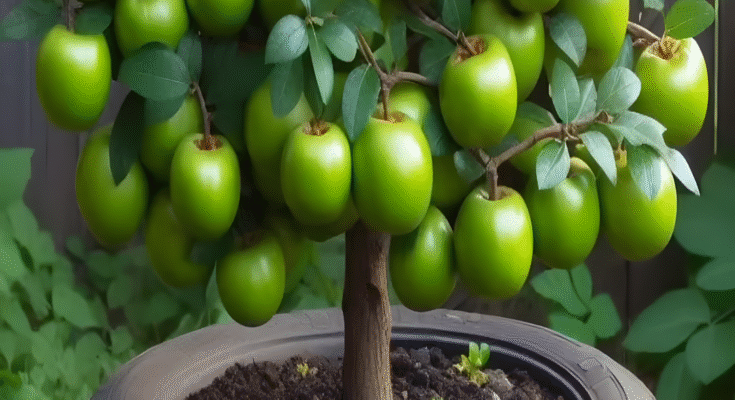New Jujube Grafting Secrets to Boost Your Harvest
If you have ever dreamed of enjoying a bountiful harvest of sweet, crisp jujubes, mastering a few new grafting secrets can turn that dream into reality. Jujube trees, often called Chinese dates, are hardy, productive, and highly rewarding to grow. However, to truly maximize your harvest and get fruit faster and in larger quantities, you need to learn clever grafting methods that skilled orchardists use to transform ordinary trees into prolific fruit producers. In this article, we’ll explore fresh grafting techniques, practical tips, and insider secrets to help you graft your jujube trees successfully and reap an abundant harvest year after year.
Why Grafting is Essential for Jujube Trees
First, it’s important to understand why grafting is so valuable for jujubes. While jujube trees can grow from seeds, the results are unpredictable—seedlings may take years to fruit and may not have the same quality as the parent tree. Grafting allows you to clone a superior variety onto a hardy rootstock, combining the best traits: disease resistance, strong root systems, and top-quality fruit. Moreover, well-grafted trees produce fruit faster, often within 1–2 years instead of 4–5.
Choosing the Right Time and Method
Timing is critical when grafting jujube trees. The best period is during late winter to early spring when the tree is still dormant, but sap flow is about to start. This ensures the graft will heal quickly and successfully. For jujubes, two highly effective grafting methods are the cleft graft and the whip-and-tongue graft. Both create a large contact area between the scion and the rootstock, which encourages strong, healthy union and rapid growth.
Selecting Rootstock and Scion
One of the best secrets for success is selecting vigorous, well-adapted rootstock. Wild jujube seedlings make excellent rootstock because they are hardy and drought-resistant. Make sure your scion wood (the branch you graft onto the rootstock) comes from a mature, healthy tree that produces large, sweet fruit. Choose pencil-thick scions with well-formed buds. Always cut your scions fresh and store them wrapped in moist paper in the fridge if you’re not grafting immediately.
Grafting Secret #1: The Double-Scion Technique
One lesser-known trick to boost success rates is the double-scion method. Instead of grafting a single scion, insert two scions into the same cleft or make two whip-and-tongue grafts side by side. This increases the chance that at least one will take. Once both grow, you can later prune away the weaker shoot. Many experienced jujube growers swear by this method for ensuring high success rates, especially with tricky varieties.
Grafting Secret #2: Use Aloe Vera for Faster Healing
Another new secret gaining popularity is using aloe vera gel on graft wounds. Aloe vera’s natural antibacterial and healing properties help the graft union stay moist and clean, reducing infection and encouraging faster callus formation. After you bind your graft with grafting tape, lightly coat the exposed cuts with fresh aloe gel. This simple step can make a noticeable difference, especially in dry or hot climates.
Grafting Secret #3: Protect and Feed the Graft
Many grafts fail because they dry out or lack nutrients. After grafting, wrap the graft site tightly with grafting tape or parafilm to keep moisture in and prevent pests from entering. Cover the whole graft with a plastic bag for the first few weeks if your climate is dry. Make sure the new graft gets adequate but gentle watering. A balanced fertilizer with extra phosphorus can support root growth and help the graft heal faster.
Grafting Secret #4: Practice Topworking Older Trees
Did you know you can convert an old, unproductive jujube tree into a high-yielding one with grafting? This is called topworking. Instead of planting new trees, you cut back the branches of the old tree and graft improved scions onto the stubs. This way, you keep the established root system, which gives the new branches a head start. Topworking saves years compared to planting new trees and is a great way to switch to better varieties without expanding your orchard.
Post-Graft Care is Crucial
Even the best graft will fail without good care. After grafting, monitor the union regularly. Remove any shoots that grow below the graft so the tree’s energy goes into the new scion. Protect young shoots from strong wind or direct scorching sun. Once the new shoots grow to about a foot long, remove the tape gently to prevent girdling. Prune wisely to shape your tree and encourage strong, balanced growth.
A Final Tip: Keep Learning and Experimenting
Mastering grafting is a skill that improves with practice. Don’t be afraid to experiment—try different methods, compare results, and learn from each season. Some growers even experiment with interstock grafting—grafting one variety onto another, then grafting a third on top—to combine the best traits of multiple varieties.
By applying these new jujube grafting secrets, you’ll be amazed at how much more fruit your trees can produce. Not only will you enjoy bigger harvests, but you’ll also feel the satisfaction of reviving old trees, propagating rare varieties, and sharing your knowledge with other growers. Grafting jujubes isn’t just a skill; it’s a rewarding tradition that connects you with generations of orchardists who know that with a sharp knife and a little patience, you can shape nature to bear sweeter, more abundant fruit.
So, gather your tools, find your best scions, and put these grafting secrets to the test this season—your future harvests will thank you!



